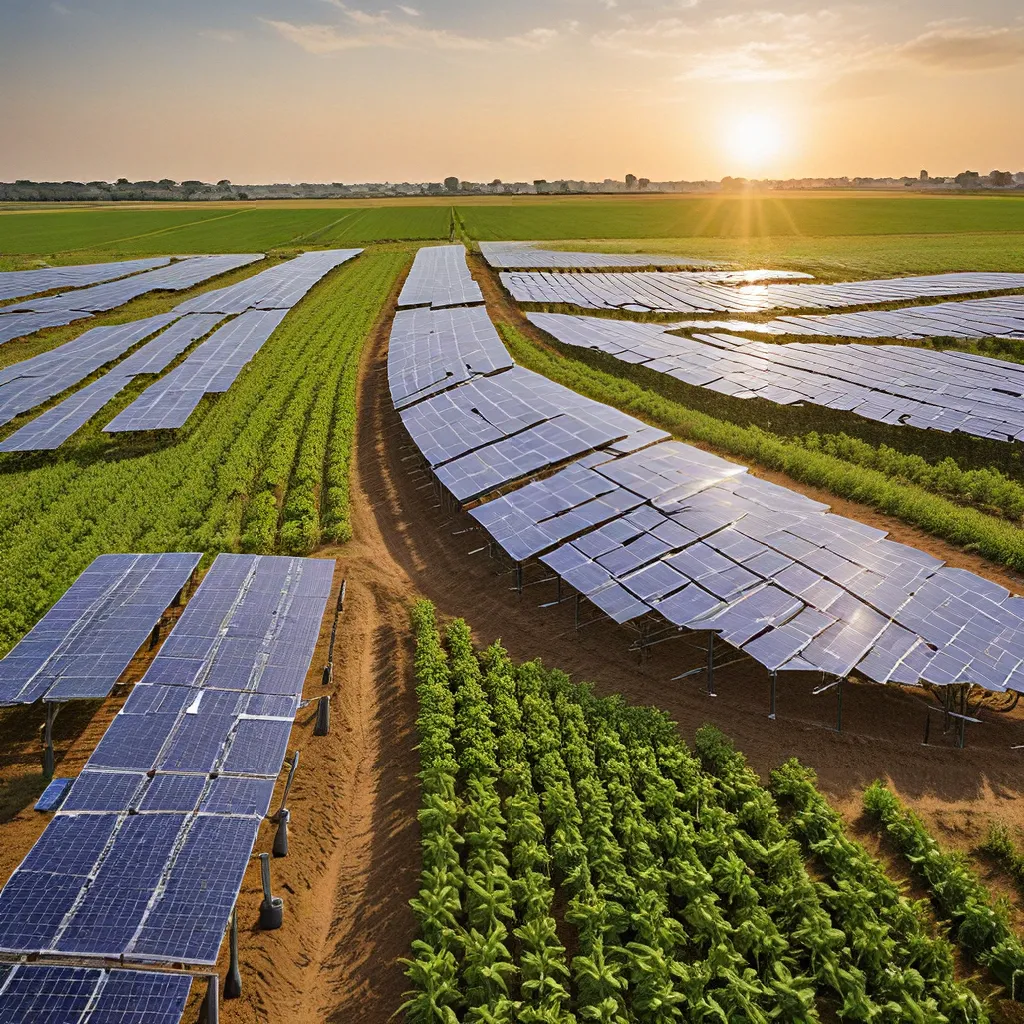
Harvesting More Than Electricity
In the sun-drenched foothills of Colorado’s Front Range, just south of Longmont, a small family-owned farm is bustling with activity. On any given summer day, you’ll find people growing spinach, sage, and strawberries, mingling with students studying sustainable food production, as bees and other pollinators hum around the flowers. But from a bird’s-eye view, the five acres that make up Jack’s Solar Garden are partially covered by dark glass – the 3,276 photovoltaic panels that together generate 12 megawatts, enough to power about 300 homes.
This fascinating combination of produce and solar panels is known as agrivoltaics – a relatively new and exciting idea that can provide ecological, economic, and community benefits, in addition to clean energy. And it could be the key to solving one of the most pressing issues facing our efforts to transition to clean energy: how to build electrical capacity while minimizing the loss of farmlands and harm to ecosystems.
Balancing Clean Energy and Nature
As the United States races to build out renewable energy infrastructure to meet our climate goals, we’re faced with a daunting challenge. According to estimates, it will take over 250,000 square miles of land – roughly the size of Colorado and Montana combined – to support enough solar and wind generation to reach our net-zero emissions target by 2050. That’s a huge footprint, and it poses a significant threat to natural areas.
The Nature Conservancy has been working to identify suitable locations for renewables that minimize biodiversity loss and habitat disruption. But what about supporting farming productivity on sites that are well-suited for solar? Can we retrofit these sites to not only generate clean energy, but also improve biodiversity?
That’s where agrivoltaics comes in. The shade provided by the solar panels can actually help plants retain carbon and water, leading to increased crop yields and carbon sequestration. And by carefully selecting the right plants, we can create richer soil and greater biodiversity. It’s a win-win-win for clean energy, agriculture, and the environment.
Putting Theory into Practice
The idea of combining agriculture and solar energy has been around for decades, but it’s still in the early stages of adoption in the US, with only a handful of commercial solar-crop sites. One of the most successful examples is Jack’s Solar Garden, a farm specifically designed as an agrivoltaics project.
Since 2021, Jack’s Solar Garden has turned out over 25,000 pounds of veggies, herbs, and berries, thanks in large part to the efforts of the urban agriculture nonprofit Sprout City Farms. The property also includes a large section of pollinator habitat established by Audubon Rockies, and hosts research, education, and sustainable food production projects. It’s no surprise that Jack’s is the most visited solar array in the country!
Overcoming Challenges, Unlocking Potential
But what about retrofitting commercial solar operations that weren’t built with agriculture in mind? Many solar projects have been constructed on degraded or barren lands, where the odds of growing anything appear slim at best. Well, The Nature Conservancy decided to put that theory to the test.
In 2022, TNC led a pilot project at a small solar array owned by Boulder Housing Partners, the city’s affordable housing agency, about 10 miles southwest of Jack’s Solar Garden. The half-acre site sat on rocky, degraded soil left over from the array’s construction. But with the help of a diverse group of partners, including the regenerative agriculture collective Drylands Agroecology Research, they set out to bring the site back to life.
After just one year, over 83% of the 30 different perennial species they planted – including fringe sage, scarlet globe mallow, and native flax – had survived. Insect biodiversity also increased, with more predators and pollinators thriving on the site. This showed that we can grow a variety of crops under a solar array that wasn’t originally designed for planting, even if the site is in bad shape to start.
Building a Sustainable Future, Together
As we continue to build out renewable energy infrastructure, it’s clear that we need to think more creatively about how this technology can coexist with ecosystems and communities. Agrivoltaics is not a one-size-fits-all solution, and farmers and developers are still exploring which forms of solar construction work best with different types of agriculture.
But the potential is undeniable. With careful planning and robust community engagement, we have the power to transform thousands of parcels of land – otherwise forgotten under photovoltaic arrays – into spaces that not only produce clean energy, but provide agricultural, ecological, and cultural benefits as well.
“Even small investments of time and money can bloom into large-scale transformative change,” says Duncan Gilchrist, the climate and natural resources policy associate for The Nature Conservancy in Colorado who spearheaded the organization’s agrivoltaic project in Boulder.
So, as you’re browsing the energy-saving products on Plug ‘n Save, remember that the future of renewable energy isn’t just about clean electricity – it’s about farming the sun and creating a more sustainable, harmonious world.